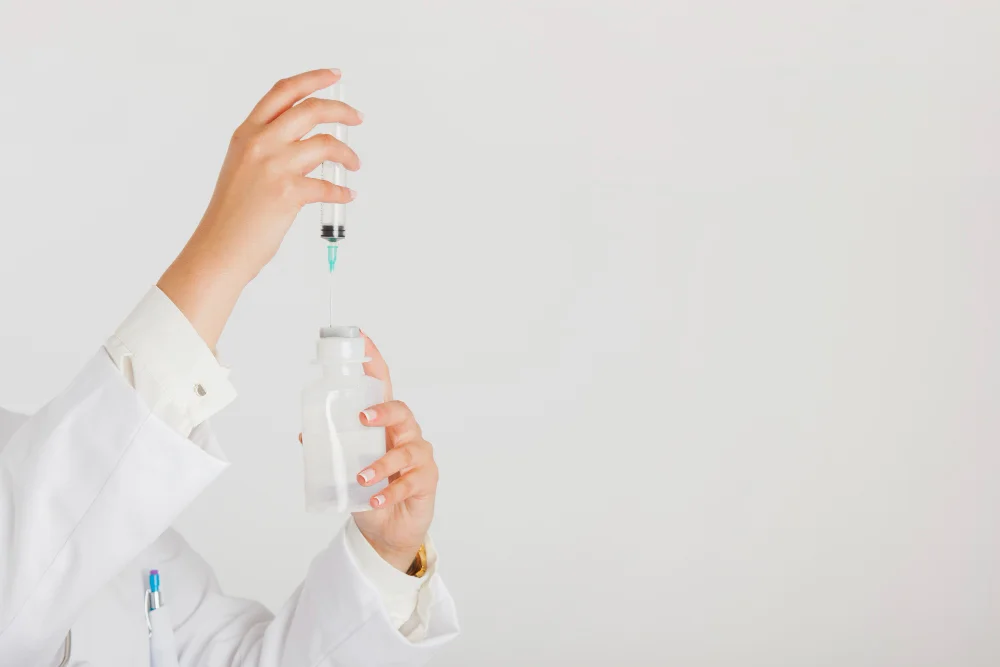Walk into any hospital and you'll see them - clear bags hanging on metal poles, tubes running down to patients' arms. A hospital drip has become standard in medical care, yet most people accept it without asking questions. What's actually in that bag? Why that specific drip instead of another? What's going into your body?
Understanding your treatment matters. When you know what a hospital drip contains and why you're receiving it, you can recognize problems, ask better questions, and feel less anxious about treatment. This article explains the most common types of drips in hospital settings and helps you understand why doctors prescribe specific solutions.
What Is a Hospital Drip and How Does It Work?
A hospital drip, medically called intravenous (IV) therapy, delivers fluids, medications, or nutrients directly into your bloodstream through a vein. The setup includes a bag containing the solution, plastic tubing, and a thin catheter inserted into your vein.
The hospital drip in hand placement is most common because veins in the hand and lower arm are easy to access and stable. Nurses typically choose the non-dominant hand when possible. For longer treatment or stronger medications, nurses might use veins in the inner elbow where larger veins can handle bigger volumes.
The drip works by gravity and sometimes electronic pumps. When the bag hangs above your heart, gravity pulls fluid down through the tube. Flow rate gets controlled by a wheel that pinches the tubing or by a pump that measures how much fluid you receive per hour.
Key medical terms to know:
- "Infusion" means putting fluid into your vein
- "Bolus" refers to a large amount given quickly
- "Continuous infusion" means steady flow over hours
- "IV push" means medication injected directly over a few minutes
Types of Drips in Hospital Settings
Hydration and Electrolyte Drips
Normal saline is probably the most common drip at hospital facilities. This solution contains 0.9% sodium chloride - salt water that matches your blood's salt concentration. Doctors order normal saline for dehydration, blood loss replacement, medication dilution, and keeping IV lines open. You might receive this after surgery or during illness causing vomiting or diarrhea.
Lactated Ringer's solution contains sodium, chloride, potassium, calcium, and lactate. This more closely matches your body's natural balance. Surgeons often choose this during operations because it helps maintain proper pH levels. Trauma patients frequently receive Lactated Ringer's for blood loss.
Dextrose solutions provide both hydration and calories. D5W (5% dextrose in water) gives quick energy and prevents low blood sugar. D5NS combines dextrose with saline for both calories and salt replacement. Diabetic patients need careful watching with dextrose drips since they raise blood sugar.
Medication Administration Drips
Antibiotic infusions treat bacterial infections through IV delivery when oral antibiotics won't work fast enough. You might see antibiotics this way for pneumonia, sepsis, bone infections, or after surgery. These typically run over 30 minutes to several hours depending on the drug.
Pain management medications by drip provide steady relief for severe pain. Patient-controlled analgesia (PCA) pumps let you push a button for extra doses within safety limits. This works well after major surgery or for cancer pain.
Blood pressure medications might be given by continuous drip in critical situations. Intensive care patients often receive medications to raise low blood pressure or lower dangerously high blood pressure. These require constant watching since they work quickly.
Chemotherapy drips deliver cancer-fighting drugs directly into your bloodstream. These follow strict protocols with specific drugs, doses, and timing. Infusion can take 30 minutes to several hours depending on the treatment plan.
Blood Product Transfusions
Blood transfusions replace blood lost through injury, surgery, or medical conditions. Different blood products serve different purposes. Packed red blood cells treat anemia and blood loss by carrying oxygen. Plasma provides clotting factors for bleeding disorders. Platelets help blood clot in patients with low platelet counts.
Transfusions require careful blood type matching to prevent dangerous reactions. Nurses verify your identity and blood type multiple times before starting. The process typically takes 2-4 hours with close watching. You'll feel the hospital drip in hand get cool as blood products come from refrigeration.
Nutritional Support Drips
Total Parenteral Nutrition (TPN) provides complete nutrition through IV when you can't eat normally. This thick, milky-white solution contains proteins, carbohydrates, fats, vitamins, and minerals. Patients receive TPN for bowel blockages, severe bowel disease, or after certain surgeries. TPN usually goes through a larger central line due to its concentration.
Vitamin and mineral infusions fix deficiencies that oral intake can't correct. Iron infusions treat iron-deficiency anemia when oral supplements fail. Magnesium drips correct dangerous low levels that can cause heart rhythm problems.
How to Know What Drip at Hospital You're Receiving
Every IV bag has a label with important information. The label shows the solution name, concentration, total volume, any added medications, preparation date, and expiration time. Nurses also attach labels with your name and medical record number.
Ask your healthcare team questions:
- What is this drip and why do I need it?
- What are the expected benefits and potential side effects?
- How long will it take and how often will I receive it?
- What should I watch for during treatment?
Understanding infusion rates helps you know what's normal. Rates are measured in milliliters per hour (mL/hr). Hydration fluids might run at 100-200 mL/hr. Blood transfusions typically start slowly around 50 mL/hr for the first 15 minutes to watch for reactions, then increase to 100-200 mL/hr.
Nurses regularly check your IV site, vital signs, and symptoms. They adjust rates based on how you're responding. You have the right to know what's going into your body. Medical ethics and law require informed consent for treatments. Ask for explanations in plain language.
What to Expect During Treatment
Normal sensations during a hospital drip vary by what you're receiving. You might feel coolness in your vein as fluid enters, especially with blood products. Some people notice a slight chemical taste with certain medications. Feeling the urge to urinate more is common with hydration fluids.
Common side effects depend on drip type. Hydration fluids rarely cause problems beyond needing the bathroom more often. Antibiotic infusions might cause nausea. Blood pressure medications can make you lightheaded when standing.
Warning signs needing immediate attention include pain, burning, or swelling at the IV site, redness spreading from the insertion point, chest pain or difficulty breathing, sudden rash or itching, or severe headache or confusion.
Duration varies widely. A liter of saline might run over 6-8 hours. Antibiotics typically take 30 minutes to 2 hours per dose. Blood transfusions need 2-4 hours. Your nurse can tell you how long your specific drip should take.
Post-treatment care includes watching for delayed reactions. The IV catheter might stay in place if you'll need more treatments. When removed, firm pressure prevents bruising. Small bruises at the site are normal and fade within days.
Safety and Quality Assurance
Hospital protocols for drip administration follow strict standards. Nurses must verify five "rights" before starting any IV medication: right patient, right drug, right dose, right route, and right time.
Error prevention measures include:
- Barcode scanning systems that match your wristband to medication orders
- Smart IV pumps that alert nurses if settings seem unusual
- Two nurses independently checking high-risk medications before giving them
Patient identification verification happens multiple times. Expect nurses to check your wristband and ask your name and birthdate repeatedly. This ensures your safety.
Sterility and infection control standards protect you from complications. Nurses use sterile technique when inserting IVs or accessing existing lines. They clean injection ports with alcohol before adding medications. IV sites get checked every shift for signs of infection. Catheters are changed every 72-96 hours or sooner if problems develop.
Conclusion
Understanding different types of hospital drip treatments helps you participate in your healthcare decisions. Whether you're receiving hydration, medications, or nutritional support, knowing what's in that bag and why you need it helps you recognize potential problems early. Ask questions - your healthcare team wants you informed and comfortable with your treatment.



